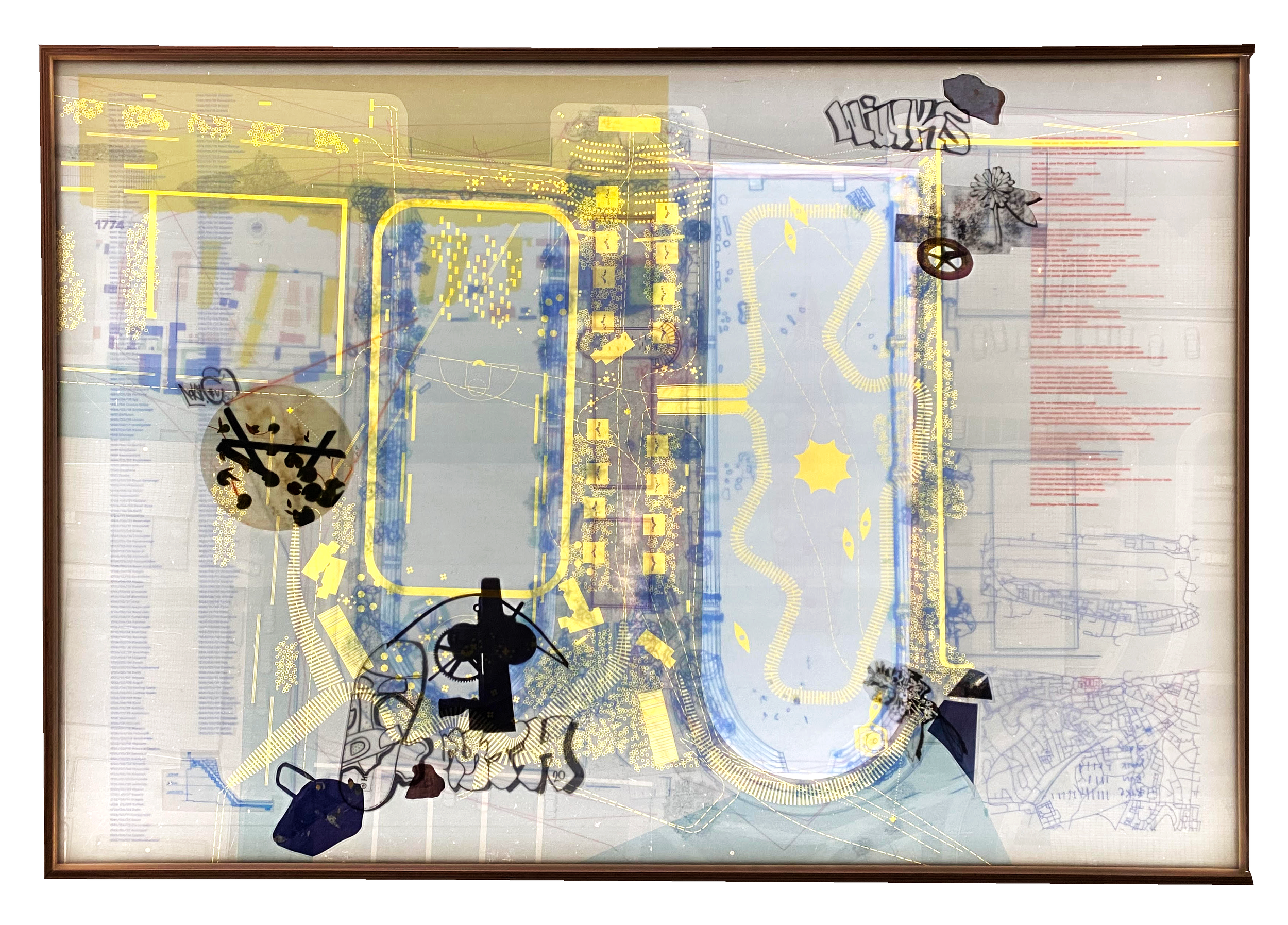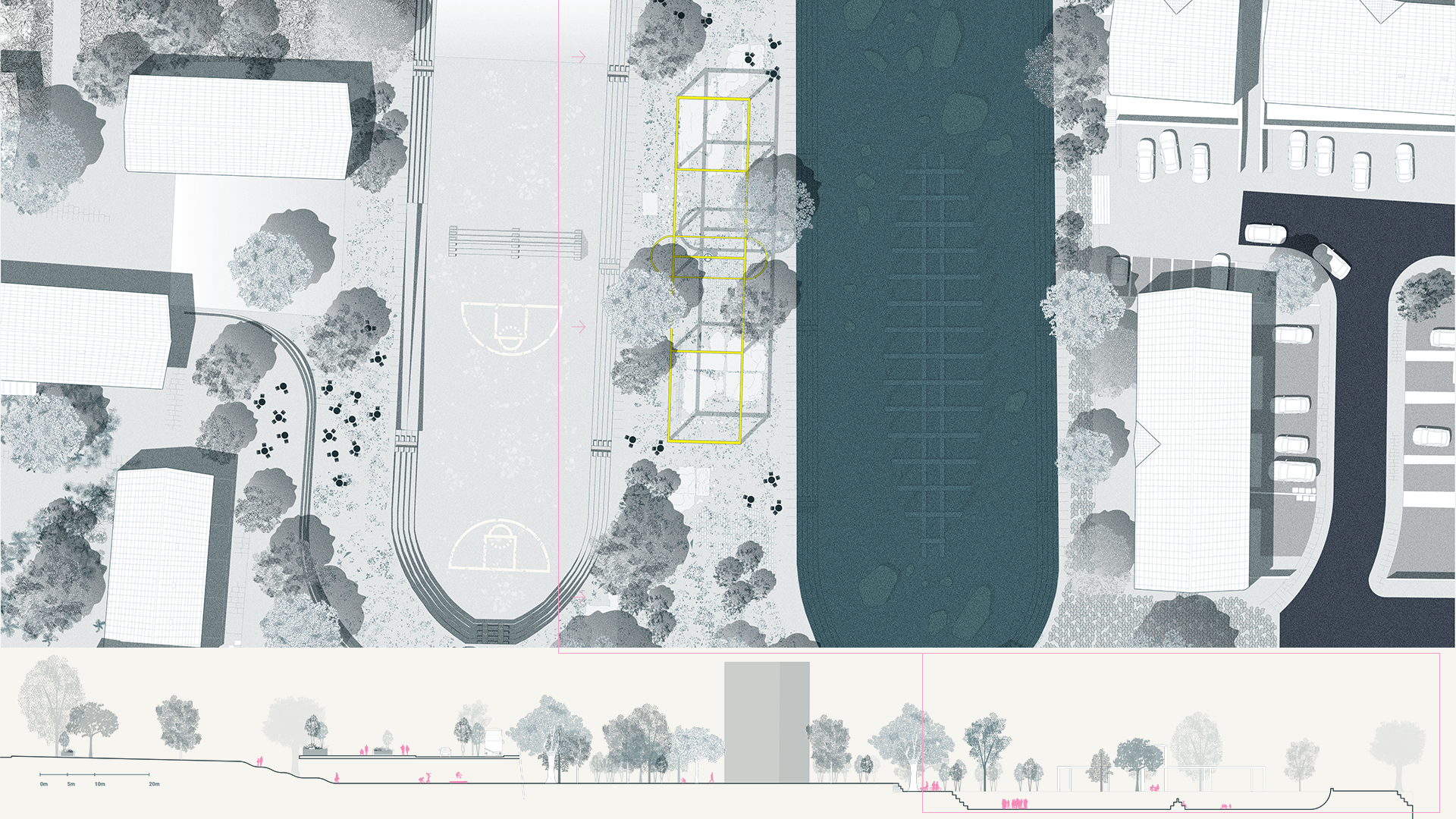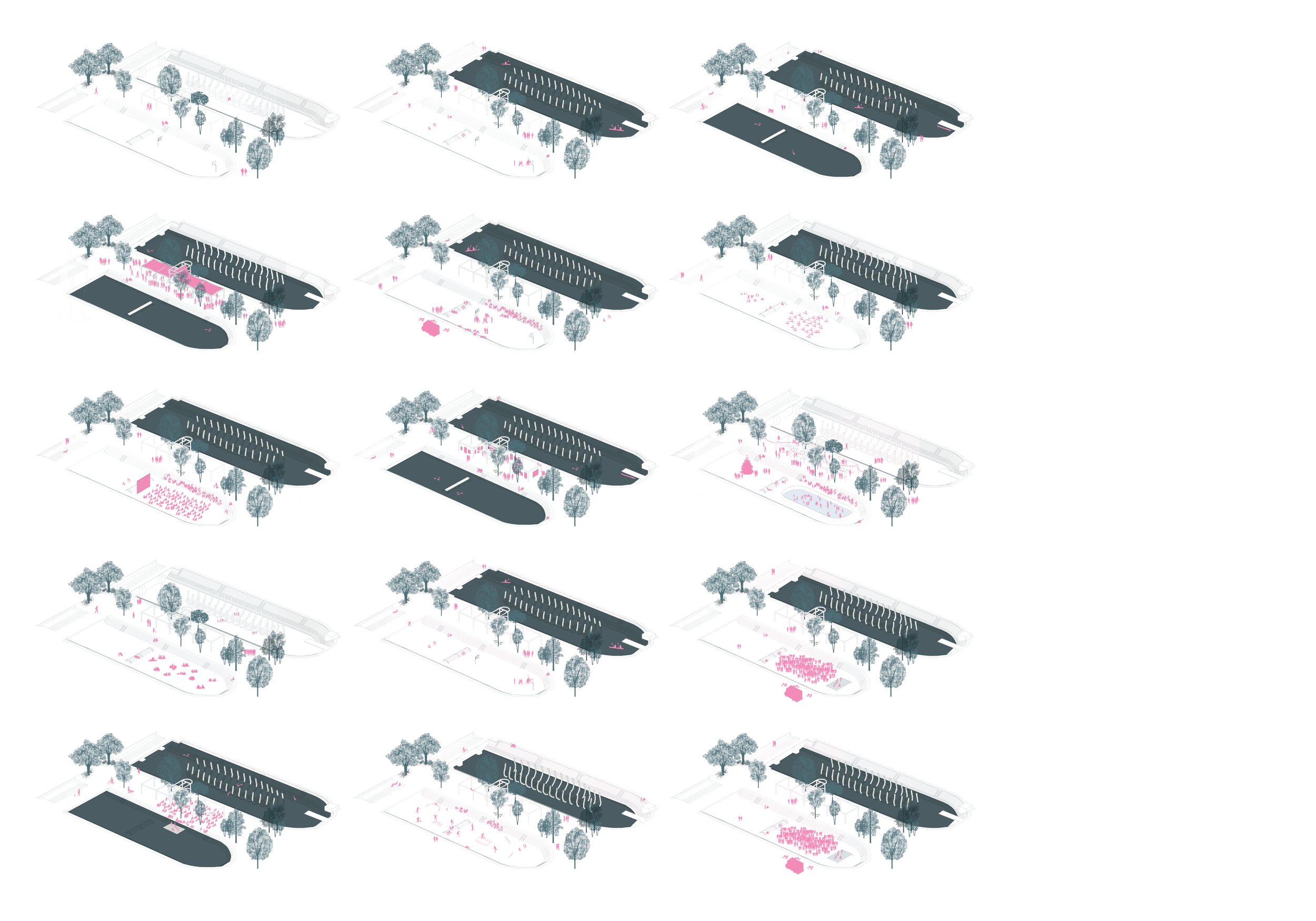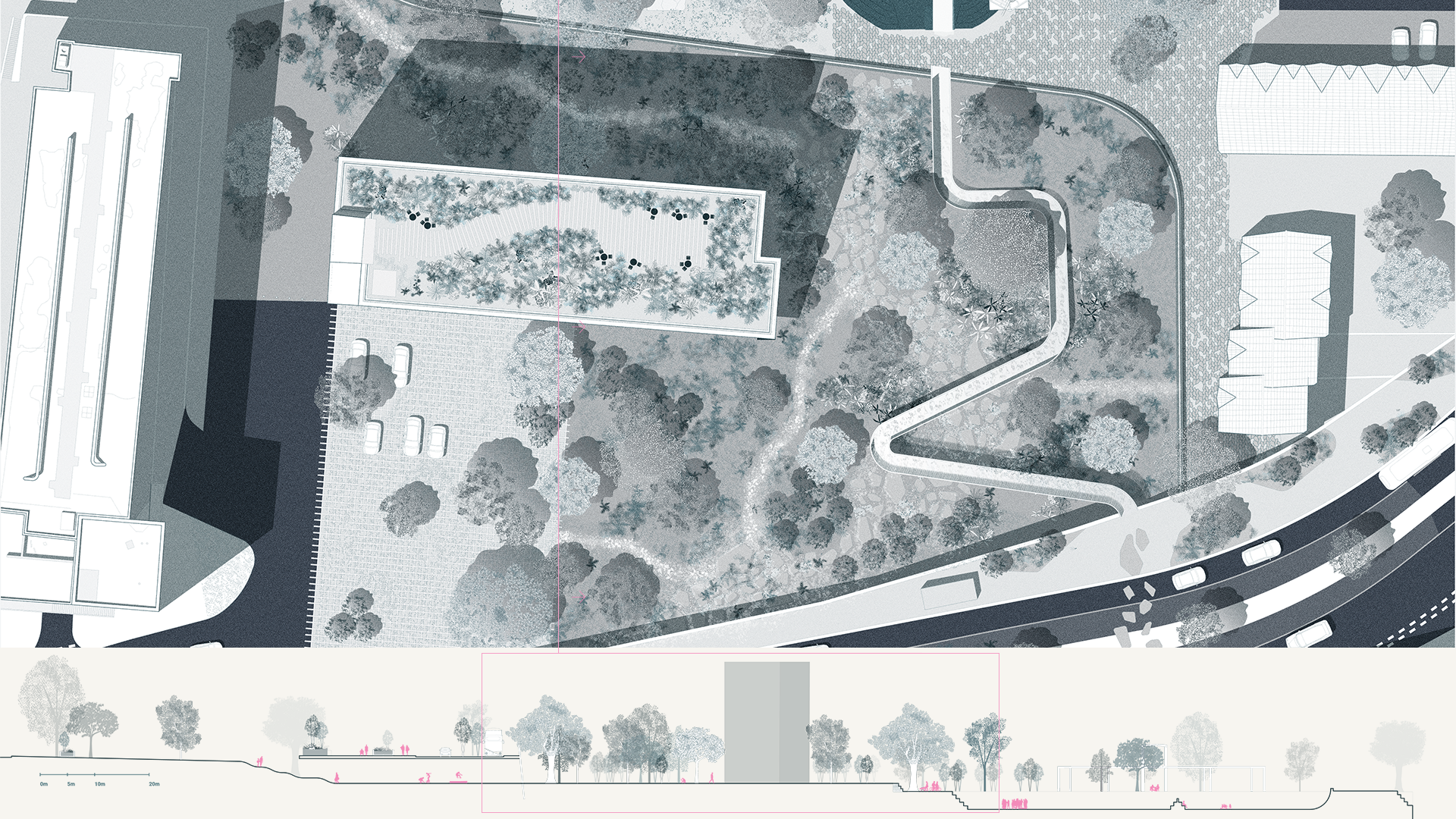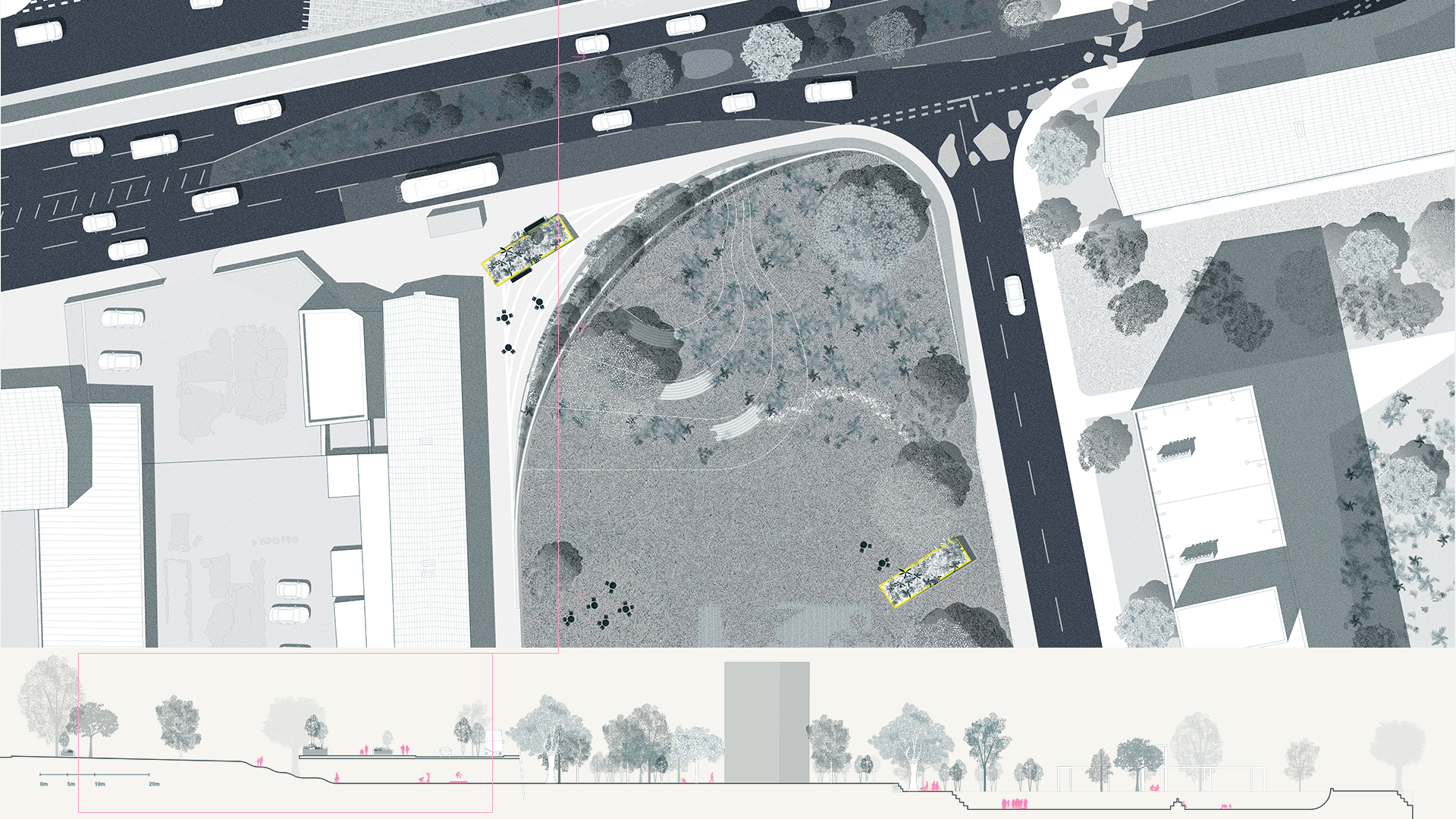Dynamic Duo
In order for something to be considered “abandoned”, doesn’t it at some point have to create value? An abandoned site can not be called abandoned unless there was something to abandon to begin with. Today, many abandoned places sit for years, either being taken back over by nature or in purgatory until someone comes along to create something new.
The design creates a park, a woodland, and a plaza connected as one public realm defined by breaking down walls, creating new entrances, stitching spaces together, fracturing the pavement, planting trees, reusing materials, and reviving the functionality of the pools.
Built as part of Henry VIII’s Woolwich dockyard in the early 1500s, the dry docks are some of the oldest physical ancestors that still exist on site. A handful of structures near the entry of the dockyard still stand, but most buildings and docks have been covered or replaced.
Phase 1 focused on a palimpsest drawing - a layering of information digging deep into our sites. Visiting the site two or three times a week and observing different times of the day helped build a rich understanding of the area - taking pictures, videos and sketching interesting elements along the way. Each time taking a different route - sometimes by train, by bus, by ferry, by foot - to help give a fresh perspective on the view of the site. These observations began to give form to the palimpsest drawing.
“These images mark a shift from models of formal organization and meaning that work with transparency and depth, to a condition of shallow surfaces, in which meaning resides in graphic information lying on the surface”
Stan Allen, Points and Lines.
Phase 2 began to turn our digging into the design. How might we initiate changes on-site that would trigger transformation? This notational study could be used as a prototyping exercise to figure out what would work and what would not work.
DYNAMIC DUO // The function of filling and emptying the pools will return to the site, but not to build ships, to build relationships. Below are some illustrations showing different activities that are possible by bringing back the ability to fill and empty the docks.
WELCOME WOODLAND // The woodland is the area most changed through the design since it was mainly dominated by hardscape, to begin with. Now, it is a densely planted wonderland full of rich biodiversity and lush, soft greenspace.
INTERNATIONAL GARDENS // The dockyard’s history is an essential aspect to highlight in the design. Mapping the ships shows what the global reach of the dockyard was. This map includes battles or locations where the ships fought.
As the symbol shifts from power to a more inclusive space, it is important to preserve the history but also rewire it in a positive way. Inspired by Anouk Vogel’s installations, the planting strategy for the Dynamic Duo will include plants from all of the nations that were attacked by ships created at the Woolwich Dockyard.
KINGSMAN SQUARE // The grassy area comes to life to connect the docks to the surrounding neighborhood.





